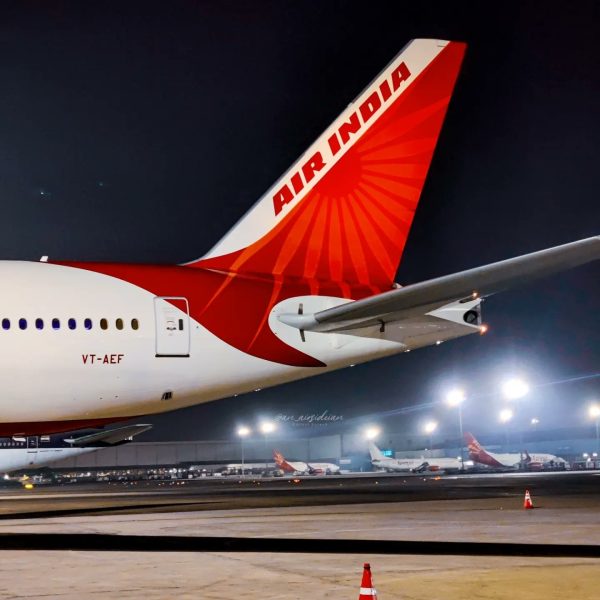
Air India-Vistara merger: Singapore Airlines gets bigger India play
Singapore Airlines will be part of India’s second-largest airline, giving it a significant position in one of the world's fastest-growing markets; the merger will also impact other airlines, and Indian aviation, substantially

The Tata Group on Tuesday (November 29) announced that Vistara Airlines will merge with Air India. Singapore Airlines is anticipated to play a considerably larger role in the combined company than it did under its existing relationship with Vistara.
IndiGo, which has a market share of more than 55 per cent, will finally be up against a strong competitor after years of running away with a nearly insurmountable market share of over 55 per cent in the domestic market.
The merger was announced on Tuesday, 10 months after the Tata Group took over the loss-making Air India from the government. The Tatas are now putting together a long-term strategy for the Air India group to reach a 30 per cent market share in domestic and foreign markets.
Flight Insight: Akasa Air on steady ascent despite co-promoter Jhunjhunwala’s demise
“India is located between the growth centres of Southeast Asia, the Middle East and Europe,” Pankaj Narayan Pandit, an international airline analyst, told The Federal. “For any airline to fly from Singapore to London, it will have to fly over India; hence, this is a strategic partnership. The combination of Vistara and Air India will greatly benefit Singapore Airlines.”
Increased presence in India
With the merger of AirAsia India and Vistara into Air India, Singapore Airlines will be part of the second-largest airline in India, giving the airline a significant position in one of the world’s fastest-growing markets, according to Pandit, who previously worked for Air India and Sabre Inc, a US-based travel technology multinational.
Under the deal, Singapore Airlines will invest ₹2,058.5 crore to acquire 25.1 per cent of Air India, the country’s flag carrier before its acquisition by the Tatas. Air India, Vistara, AirAsia India and Air India Express (which specialises in low-cost international flights to the Gulf) are all operated by the Tata Group.
Flight Insight: Mounting losses, safety issues — how is SpiceJet still afloat?
Tata Sons already received approval from the Competition Commission of India (CCI) for AirAsia India’s merger with Air India. Air India, AirAsia India and Vistara had a combined domestic market share of 25.9 per cent in October.
Their on-time performance was also a healthy 90 per cent, while their passenger load factor was 73.6 per cent, 74.9 per cent, and 84.3 per cent, respectively. Air India Express launched its services in 2005, followed by AirAsia India in 2014 and Vistara in 2015.
Widely anticipated deal
The announcement of Vistara’s consolidation with Air India was widely anticipated, and it is a strategic step toward firmly reestablishing Air India’s market position. “The combination would allow for the coordination of pricing and schedules, which will promote profitable route options,” said Satyendra Pandey, Managing Partner of aviation consulting firm AT-TV.
He said the merger also eliminates undesirable SOEC (substantial ownership and effective control) issues. “That said, the merger brings its fair share of challenges, and a successful outcome cannot be taken as a given,” he added.
In Tuesday’s merger announcement, the government had, in a notification, confirmed its position about foreign airlines acquiring a stake in Air India.
According to a March 2020 notification, “foreign investment(s) in M/s Air India Ltd., including that of foreign airline(s), shall not exceed 49 per cent, either directly or indirectly, subject to the condition that substantial ownership and effective control of M/s Air India Ltd. remain vested in Indian Nationals.”
Creation of duopoly
“It is likely that some joint procurement training opportunities will get leveraged going forward. The merger will also have structural effects on the market, creating a clear duopoly. This may drive the boards of the weaker airlines to consider consolidation options,” Pandey added.
Flight Insight: Jet Airways revival not happening in a hurry despite promising signs
While IndiGo is unlikely to choose a foreign airline as a joint venture partner, others with marginal shares in the domestic market may start scouting for tie-ups with international airlines. It, however, may be difficult for these domestic airlines to do so because foreign airlines typically desire larger ownership in joint ventures, Pandey observed.
The merged business will be in a position to negotiate better terms with vendors and aircraft makers. It will also confront issues because each of the merged organisations will bring its own work culture to the table.
Aside from inventories, the combined firm will now have a vast pool of cabin personnel and pilots. However, it may be impossible to retain all staff, barring the cabin crew, and hence another round of VRS may occur once the merged entity is formed.

